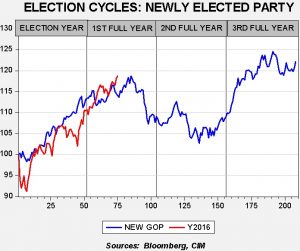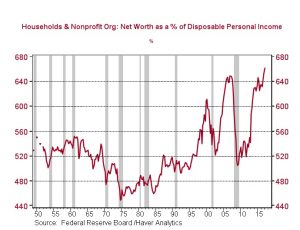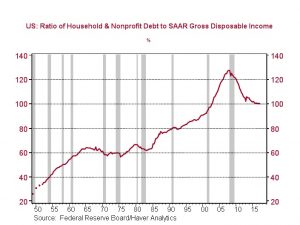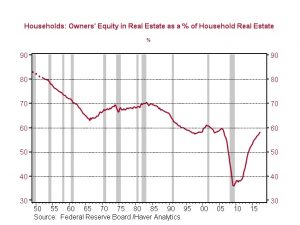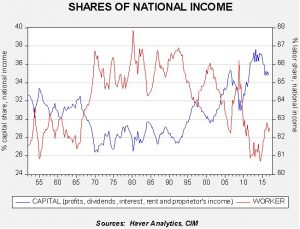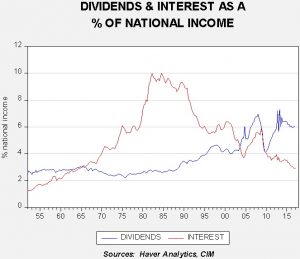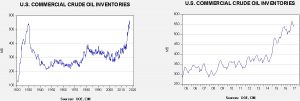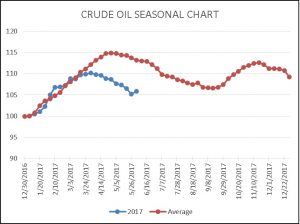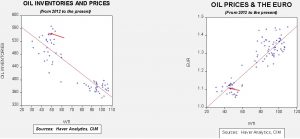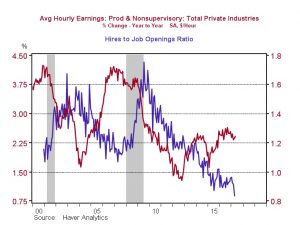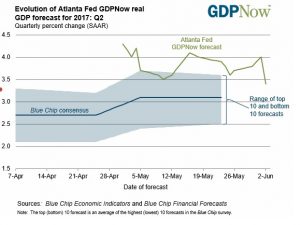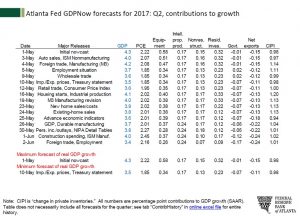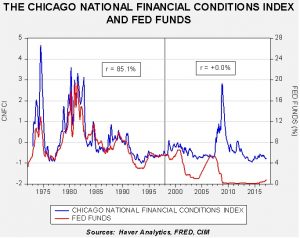by Bill O’Grady, Kaisa Stucke, and Thomas Wash
[Posted: 9:30 AM EDT] The global political situation remains fluid. In France, President Macron won an apparent smashing victory in the first round of parliamentary elections, winning nearly 32% of the vote and faring much better than the conservative parties, which captured around 20%. The National Front picked up 14% of the vote and the Socialists polled in the single digits. The second round of elections will be held on June 18 when the En Marche Party is expected to capture 400 to 440 seats out of 577 seats. This is an impressive victory for a new party. The vote will give this new party and Macron a dominating hold on the legislature. Macron is promising to implement what can be best characterized as a neo-liberal policy, intending to lower taxes and end the 35-hour workweek. France never really adopted neo-liberal policies during the Reagan-Thatcher period so it would be a major change if they are implemented. On the other hand, Macron wants to create an EU fiscal mandate, which will surely be opposed by the Germans. All in all, Macron will have domestic political support.
While France appears to be moving to the right, the U.K. seems to be leaning toward unreconstructed socialism. Jeremy Corbyn pines to renationalize various industries that were privatized under Thatcher and initially nationalized by Labour after WWII. Although the Tories did win the majority of seats in the last election, they will struggle to form a government and the odds of another election soon are rising. After last week’s embarrassing loss, there is growing speculation that Theresa May will be forced to step down from her post as party leader while the Tories try to regather themselves. David Davis, the minister overseeing Brexit, has stated that Brexit negotiations will not start on June 19 as planned but will likely take place sometime next week.
We are seeing a penchant for newness as there are high levels of discord across Western societies. We have seen the rise of hard-left and hard-right parties, but what has been consistent across the West is a willingness by voters to try something new. Corbyn and Trump are calling for different policies but are clearly outside the mainstream. These persons become attractive because voters are desperate for something new, hence why France decided to go with a very young president and a new party promising neo-liberal, market-friendly policies. So far, financial markets are handling these divergences without major problems, although one could argue that currency and fixed income markets have moved while equities continue to mostly ignore political discord. We don’t know if this can last indefinitely, but it is clearly in place now.
In the Middle East, Qatar is still looking for a diplomatic solution to the blockade formed by Saudi Arabia. Qatar has been accused of funding terrorism, a claim that it has vehemently denied. SOS Tillerson has called for a de-escalation of the blockade, stating that it is hindering U.S. military operations within the region as well as being wrong on “humanitarian” grounds. It is worth noting that Qatar hosts the largest U.S. military base in the Middle East. As such, the Pentagon has also weighed in, stating that the blockade does not currently hinder its operations but rather its ability to plan for longer term military operations within the region. Alongside SOS Tillerson’s calls for de-escalation, Trump has issued a statement praising the blockade as possibly leading to the end of terrorism. Trump’s conflicting viewpoints from members of his administration have become somewhat routine. That being said, the Trump administration’s inability to formulate a coherent foreign policy could lead to the U.S. losing clout around the world.



